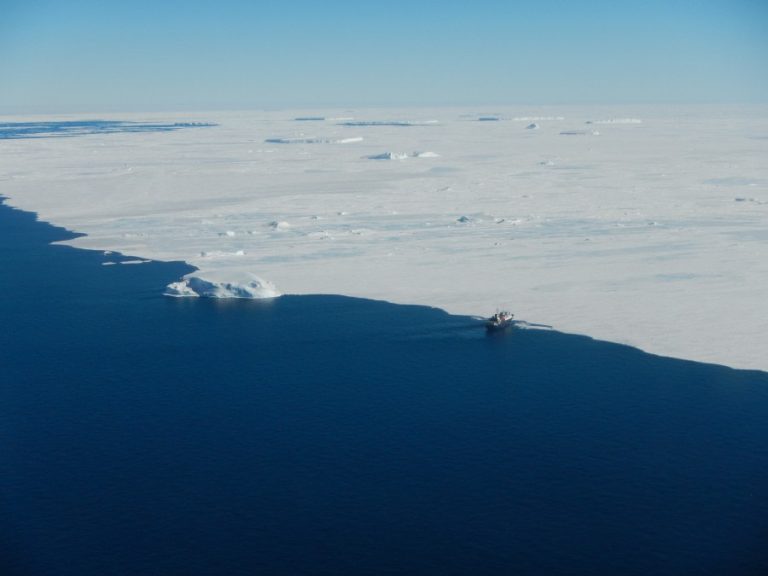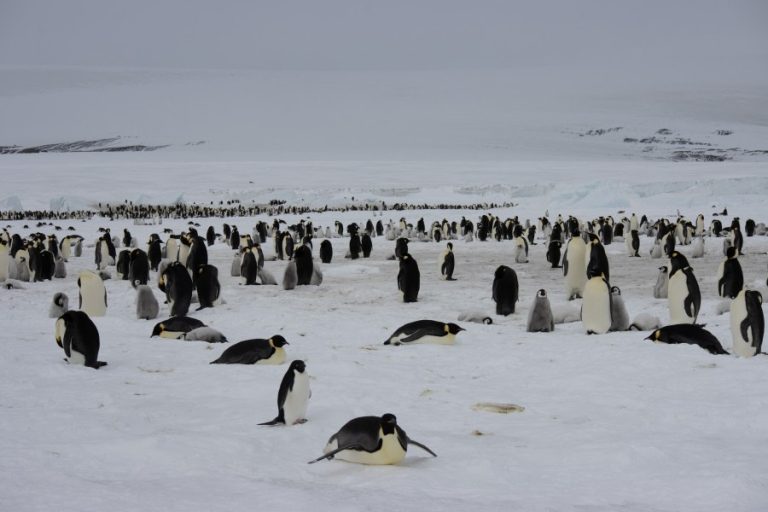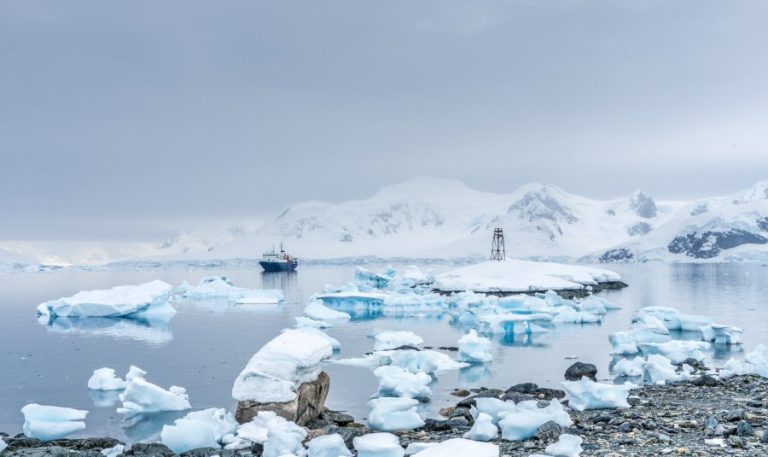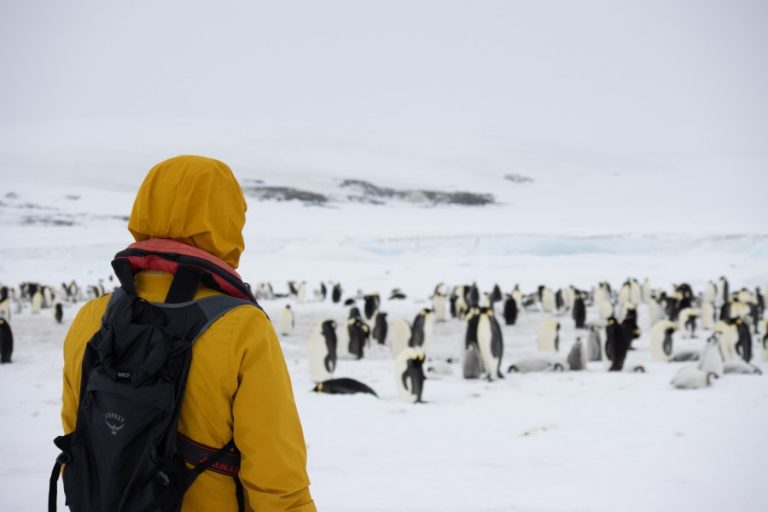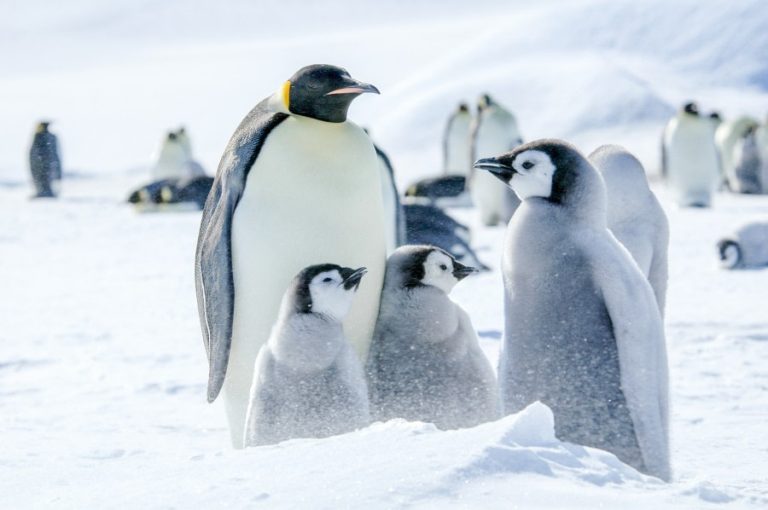Oceanwide: In Search of the Emperor Penguin
There are cruises, and then there are immersive, adventure-filled cruises. The Weddell Sea – In Search of the Emperor Penguin, offered by Oceanwide Expeditions, is far more than a simple voyage through Antarctic ice—it’s a true polar expedition, made possible by a rare and valuable element: the use of helicopters.
Aboard the m/v Ortelius, specially equipped for aerial operations in extreme environments, passengers have the opportunity to fly over the frozen landscapes of Antarctica and access areas otherwise unreachable by sea or foot. The helicopter, in particular, is the key to attempting an incredible encounter with the emperor penguin—the most elusive and captivating species of the White Continent.
Weddel Sea
Emperor penguins – credit Alexandra den Dikken
The cruise’s ambitious goal is to approach the colony of roughly 4,000 emperor penguin pairs that nest near Snow Hill Island, in the remote Weddell Sea region. Reaching this area is far from guaranteed: thick sea ice and unpredictable weather limit accessibility. For this reason, the helicopter is not just a bonus—it’s an essential tool that transforms the voyage into a once-in-a-lifetime expedition. If conditions allow, passengers are flown on short but spectacular flights to a safe landing point, about a 45-minute walk from the colony. From there, in respectful silence, guests walk across the ice to witness these extraordinary animals—true symbols of life’s resilience at the edge of the world.
The journey begins in Ushuaia, Argentina, from where the ship heads south, crossing the legendary Drake Passage. During the days at sea, the landscape changes gradually—along with the wildlife. Albatrosses, petrels, and fulmars accompany the vessel like sentinels of the great South. Upon crossing the Antarctic Convergence, the ship officially enters polar waters.
Upon approaching the Weddell Sea, the entire crew mobilizes to monitor ice conditions and plan helicopter operations. This is the most intense and unpredictable phase of the cruise. If the ice allows, a flight to Snow Hill Island is attempted. The western slopes of the Antarctic Sound, rarely seen from above, offer breathtaking views of sandstone layers, lava flows, glaciers, icebergs, and vast expanses of floating ice. It’s not uncommon to spot emperor and Adélie penguins on the ice floes, along with kelp gulls, skuas, and various petrel species. In the distance, jagged mountain peaks rise against the snow, while massive ice walls lie shattered on the slopes below.
Emperor penguins – credit Sebastiaan Schijf
Weddel Sea – credit Ilja Reijnen
Another highlight is Duse Bay, where a helicopter flight can reach a rocky ridge near an old shelter, offering a privileged view of the bay. Though still blanketed in snow and ice, much of the ground consists of frost-shattered rocks covered with lichens of various shapes and colors—a natural spectacle. Equally fascinating is Seymour Island, the historic site of the Swedish Antarctic Expedition (1901–1904), which endured harsh winters in extreme polar conditions. Here, guests can observe sedimentary rocks, fossils, and landscapes that tell millions of years of geological history.
Alongside the helicopter excursions, the cruise also includes Zodiac outings—small boats that provide close access to Adélie, gentoo, and chinstrap penguin colonies, such as those on Devil Island, home to a large Adélie population. Those willing to hike to the top of a rocky hill are rewarded with a stunning view, possibly including a waterfall formed by melting ice cascading down nearby cliffs.
Brown Bluff may be one of the most scenic spots in the northernmost part of the Antarctic continent: steep canyons, fallen boulders, and spectacular volcanic formations covered in ice. Here, vast Adélie colonies can be found, along with gentoo penguins and snow petrels nesting—offering an extraordinary display of natural life. Another possible stop is Gourdin Island, a favorite of chinstrap, gentoo, and Adélie penguins, providing yet another opportunity to explore Antarctica’s rich wildlife. Finally, as an alternative landing, there’s Esperanza Base—an Argentine research station that operates year-round and is one of the only two civilian settlements on the continent. This base offers a unique look at life in Antarctica, where science and daily routines unfold in an extreme environment.
Weddel Sea – credit Alexandra den Dikken
Emperor penguins – credit Ilja Reijnen
On the penultimate morning, the ship reaches Deception Island for the final landing, possibly at Pendulum Cove or Whalers Bay—sites of geological and historical interest. The departure time for the return journey will depend on weather conditions and the state of the Drake Passage, which can affect navigation. During the two-day return voyage through the Drake, passengers will again have the chance to observe the region’s rich birdlife—this time with greater familiarity, thanks to the experience gained. The journey concludes upon arrival in Ushuaia, where disembarkation takes place.
This expedition offers a truly comprehensive experience, combining wildlife observation, helicopter flights, and landings at fascinating sites—ensuring a dynamic and adaptable itinerary tailored to Antarctica’s unique environment.
Don’t miss news, updates, and reviews about Oceanwide Expeditions on Cruising Journal, with photos, videos, and cruise deals.

